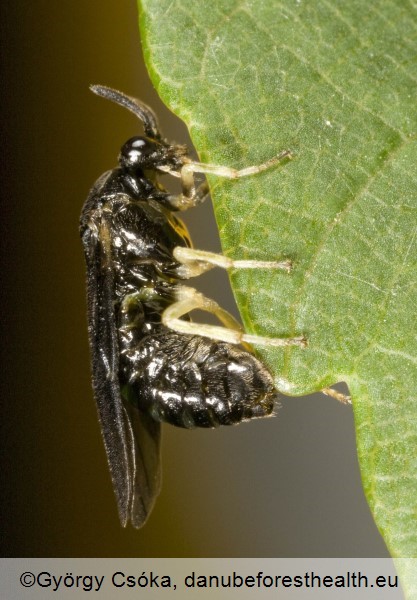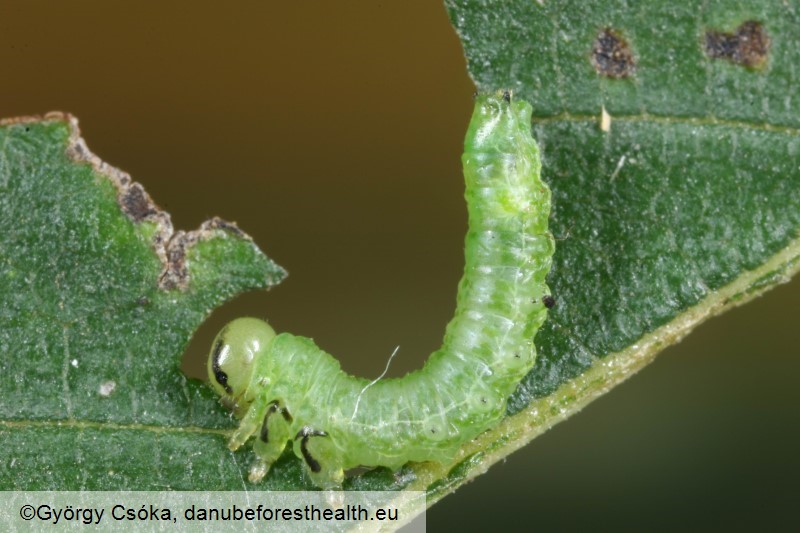Animalia
Zig zag elm sawfly
Aproceros leucopoda
Maarten de Groot
|
|

Fig. 1. Adult of Aproceros leucopoda

Fig. 2. Larva of Aproceros leucopoda

Fig. 3. Pupa on the underside of an elm leaf

Fig. 4. Zig-zag feeding pattern on elm leaf caused by Aproceros leucopoda
DETECTION PERIOD:
May-September (flight period), whole year (damage)
DESCRIPTION:
Adults are small wasps (6 mm) with black body and white legs. Antenna has three lids from which third antenna is longest. Larvae are around 10 mm long and green with 2 to 3 front legs and 8 pairs of hind legs. At the second and third pair of the front legs there are black "T" shaped signs. Females reproduce by parthenogenesis. This species has characteristic feeding patttern in the zig zag shape when it starts to eat from the leaf, later it defoliates the whole leaf.
HABITAT:
This species occurs on the leaves of all elm species (Ulmus spp.). Occurs in forests as well as in urban areas.
STATUS:
Occurs in all countries in the refocus area (Austria, Croatia, Hungary, Serbia and Slovenia). The density differentiate strongly between the countries.
IMPACT:
The zig zag elm sawfly is attacking the leaves of elm trees. Under high populations and in extreme stressful conditions like in urban areas, this species can completely defoliate the trees. When this happens several years this could affect the health of the trees and could be more vulnerable for other pests.
SIMILAR SPECIES:
All small black sawfly species (genera: Pseudaprosthema, Pseudarge, Kokujewia, Aprosthema). These species are to be differentiated by wing pattern, but not on eye. None of these species has such a defoliation pattern. Xanthogaleruca luteola also defoliates elm trees, but has not such a characteristic "zigzag" pattern.
|